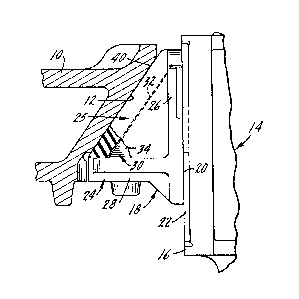Some of the information on this Web page has been provided by external sources. The Government of Canada is not responsible for the accuracy, reliability or currency of the information supplied by external sources. Users wishing to rely upon this information should consult directly with the source of the information. Content provided by external sources is not subject to official languages, privacy and accessibility requirements.
Any discrepancies in the text and image of the Claims and Abstract are due to differing posting times. Text of the Claims and Abstract are posted:
| (12) Patent: | (11) CA 1305361 |
|---|---|
| (21) Application Number: | 1305361 |
| (54) English Title: | FRICTION CASTING WITH POLYMER COVER |
| (54) French Title: | PATIN STABILISATEUR A REVETEMENT POLYMERE |
| Status: | Term Expired - Post Grant |
| (51) International Patent Classification (IPC): |
|
|---|---|
| (72) Inventors : |
|
| (73) Owners : |
|
| (71) Applicants : |
|
| (74) Agent: | RICHES, MCKENZIE & HERBERT LLP |
| (74) Associate agent: | |
| (45) Issued: | 1992-07-21 |
| (22) Filed Date: | 1989-05-03 |
| Availability of licence: | N/A |
| Dedicated to the Public: | N/A |
| (25) Language of filing: | English |
| Patent Cooperation Treaty (PCT): | No |
|---|
| (30) Application Priority Data: | ||||||
|---|---|---|---|---|---|---|
|
FRICTION CASTING WITH POLYMER COVER
Abstract of the Disclosure
A friction wedge for use in a railroad car truck
bolster pocket which has a slanted rear wall and adjoining side
walls perpendicular thereto, one surface thereof adapted to bear
against a portion of a car truck side frame and a slanted surface
and adjoining sides adapted to bear against the slanted rear wall
and adjoining side walls of the bolster pocket. The friction
wedge includes a metal body and a polymer cover providing the
slanted surface and adjoining sides, with the polymer cover being
formed in a plurality of sections movable relative to each other
and the metal body such that, during use, the polymer sections
may move into contact with the pocket rear wall and adjoining
side walls.
Note: Claims are shown in the official language in which they were submitted.
Note: Descriptions are shown in the official language in which they were submitted.

2024-08-01:As part of the Next Generation Patents (NGP) transition, the Canadian Patents Database (CPD) now contains a more detailed Event History, which replicates the Event Log of our new back-office solution.
Please note that "Inactive:" events refers to events no longer in use in our new back-office solution.
For a clearer understanding of the status of the application/patent presented on this page, the site Disclaimer , as well as the definitions for Patent , Event History , Maintenance Fee and Payment History should be consulted.
| Description | Date |
|---|---|
| Inactive: Expired (old Act Patent) latest possible expiry date | 2009-07-21 |
| Inactive: IPC from MCD | 2006-03-11 |
| Inactive: IPC from MCD | 2006-03-11 |
| Inactive: Entity size changed | 1998-06-25 |
| Grant by Issuance | 1992-07-21 |
There is no abandonment history.
| Fee Type | Anniversary Year | Due Date | Paid Date |
|---|---|---|---|
| Reversal of deemed expiry | 1997-07-21 | 1997-06-27 | |
| MF (category 1, 5th anniv.) - small | 1997-07-21 | 1997-06-27 | |
| MF (category 1, 6th anniv.) - standard | 1998-07-21 | 1998-06-15 | |
| MF (category 1, 7th anniv.) - standard | 1999-07-21 | 1999-06-11 | |
| MF (category 1, 8th anniv.) - standard | 2000-07-21 | 2000-07-07 | |
| MF (category 1, 9th anniv.) - standard | 2001-07-23 | 2001-06-13 | |
| MF (category 1, 10th anniv.) - standard | 2002-07-22 | 2002-06-27 | |
| MF (category 1, 11th anniv.) - standard | 2003-07-21 | 2003-06-09 | |
| MF (category 1, 12th anniv.) - standard | 2004-07-21 | 2004-06-16 | |
| MF (category 1, 13th anniv.) - standard | 2005-07-21 | 2005-06-07 | |
| MF (category 1, 14th anniv.) - standard | 2006-07-21 | 2006-06-07 | |
| MF (category 1, 15th anniv.) - standard | 2007-07-23 | 2007-07-03 | |
| MF (category 1, 16th anniv.) - standard | 2008-07-21 | 2008-06-30 |
Note: Records showing the ownership history in alphabetical order.
| Current Owners on Record |
|---|
| STANDARD CAR TRUCK COMPANY |
| Past Owners on Record |
|---|
| WILLIAM C. EUNGARD |